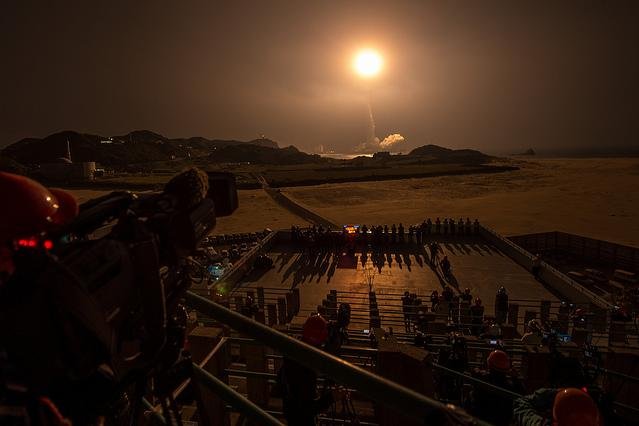The NASA-Japan Aerospace Exploration Agency (JAXA) Global Precipitation Measurement (GPM) Core Observatory was launched aboard a A Japanese H-IIA rocket today from the Tanegashima Space Center in Tanegashima, Japan. (NASA/Bill Ingalls)
TANEGASHIMA, Japan, Feb. 27 (UPI) -- NASA's newest weather satellite was launched from Japan's Tanegashima Space Center today, kicking off a busy year during which the space agency plans to launch a total of five Earth-observation missions. The satellite was propelled into space by a Japanese H-IIA rocket; it will orbit Earth at altitude of roughly 253 miles.
Global Precipitation Measurement (GPM) Core Observatory is a joint effort between NASA and the Japan Aerospace Exploration Agency. The satellite will beam back near-real-time observations of rainfall and snowfall every all over the world -- from Arctic Circle to Antarctic Circle.
The data, sent every three hours, will help climate scientists at NASA better understand climate change, weather cycles and precipitation patterns, NASA officials said in a statement released Thursday.
"With this launch, we have taken another giant leap in providing the world with an unprecedented picture of our planet's rain and snow," said NASA Administrator Charles Bolden. "GPM will help us better understand our ever-changing climate, improve forecasts of extreme weather events like floods, and assist decision makers around the world to better manage water resources."
The GPM satellite is the largest spacecraft ever assembled at Goddard Space Flight Center in Greenbelt, Md. It was built using cutting-edge Japanese technology, like the Dual-frequency Precipitation Radar, which will measure precipitation with a level of precision never seen before.
"We have spent more than a decade developing DPR using Japanese technology, the first radar of its kind in space," said Masahiro Kojima, JAXA GPM/DPR project manager. "I expect GPM to produce important new results for our society by improving weather forecasts and prediction of extreme events such as typhoons and flooding."
Next up, NASA will launch the ISS-RapidScat in June, an instrument designed to collect information on ocean winds.
[NASA]















